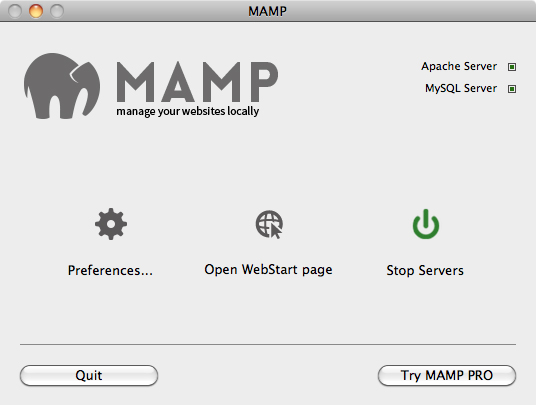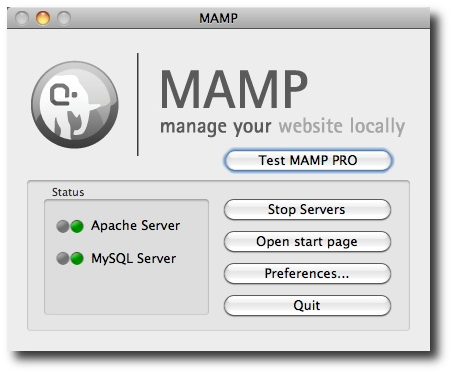

Once the import is completed, the prompt will return. It will take a while for the dump to get imported.
#Mac mamp mysqldump mac os
MariaDB Server is available for installation on macOS (formerly Mac OS X).

Your command is complete! Hit enter and have faith. Upgrading MariaDB Building MariaDB Server from source Other resources.
#Mac mamp mysqldump full

Applications/MAMP/Library/bin/mysql -u root -p Now that mysql is recognized in the Windows command prompt, you can run the MySQL commands listed below to dump and restore your databases.
#Mac mamp mysqldump mac os x
On Mac OS X you can simply drag and drop your file to the console to get the full path written for you. It is more covenient to do this using the command line, expecially since it’s just a one liner. You could increase the size of maximum uploads in your php.ini file, however if the dump is really big (over 100Mb), the operation can take ages to complete. To fix, check that waittimeout mysql variable in your my.cnf configuration file is large enough, eg waittimeout. env or otherwise.If you are using MAMP for your local WordPress or PHP development on a Mac, you likely need to import huge MySQL database dump files (more then 32Mb) in your local environment. I am trying to export a database in mysql from Mac terminal using. Server timed out and closed the connection. No configuration file is necesary, just env variables set in your. If necessary, you can add paths for Postgres too. PATH_TO_MYSQLDUMP=/Applications/MAMP/Library/bin/mysqldump PATH_TO_MYSQL=/Applications/MAMP/Library/bin/mysql ctrl + space bar (to access spotlight) Then start typing ‘Terminal’ before you have even finished the little Apple gnomes will have guessed you want to open the Terminal (which of course you do). Here is an example for MAMP on a Mac with MySQL. Personal wiki in your Mac 10. 'craft-db-paths' => \samhernandez\craftdbpaths\ CraftDbPaths::class,Īdd any of the following env vars to your. A protip by zigotica about mamp, mysqldump, and wp-cli. Open /config/app.php, add the CraftDbPaths class as a module, and bootstrap it. MySqlDump is asking for my Path to mysql binaries: I dont know what to put in ( /Applications/Mamp/db/mysql). composer require samhernandez/craft-db-paths Run the following command in the root of your project. It is installed with composer on the command line. This is a module for Craft CMS, not a plugin available in Craft's Plugin Store. What if you could just replace mysqldump with its full path and not have to roll your own command? That's what this module is for. You can see how it’s built for MySQL in the Schema::defaultBackupCommand() method. It excludes unnecessary session, cache, and asset data. The thing is, Craft’s default dump command is really nice. The default backup command looks like this: mysqldump

BackgroundĬraft relies by default on the mysqldump and mysql executables to backup and restore databases. Skip to the usage instructions if you already know the story.


 0 kommentar(er)
0 kommentar(er)
